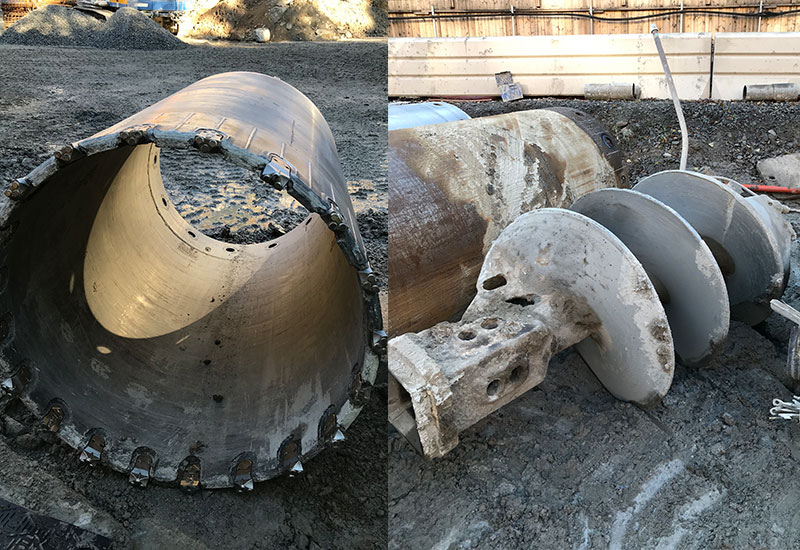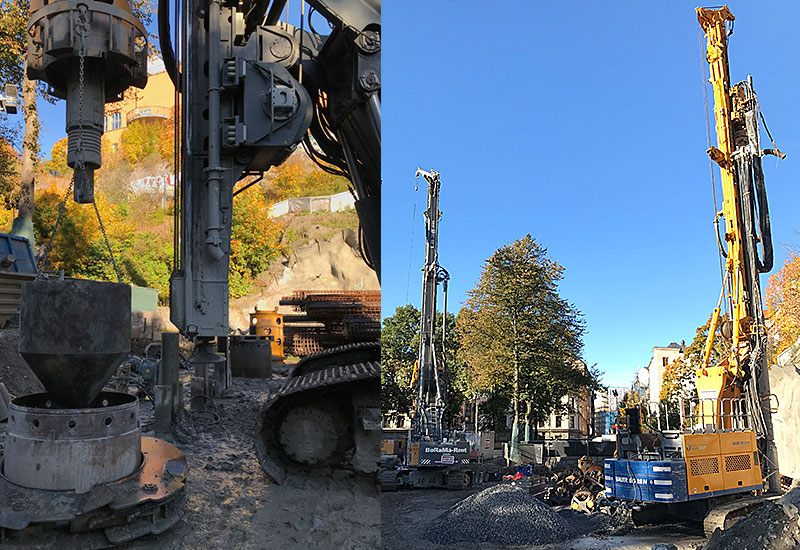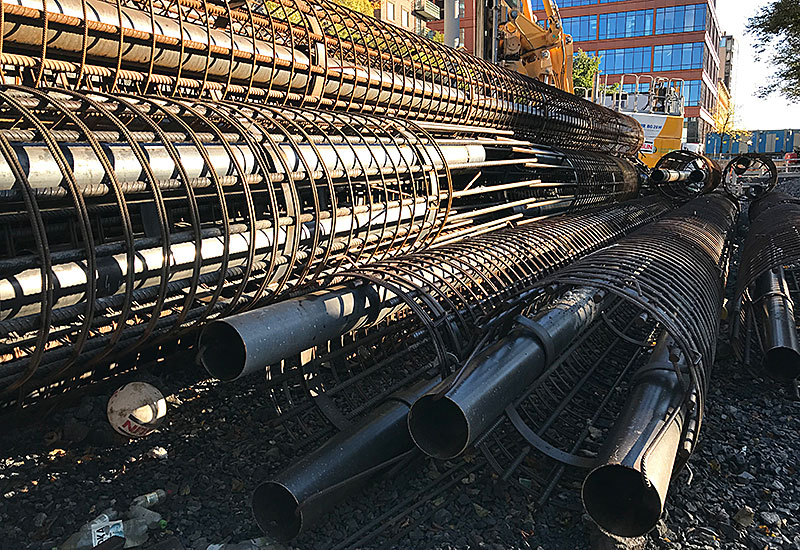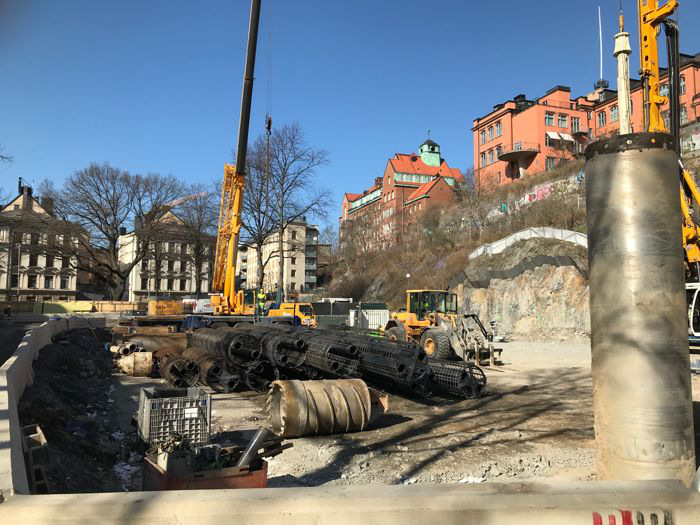The support structure is comprised of so-called secant piles, which are overlapping piles cast in situ to form a watertight wall.
“This task involves several challenges. On the one hand, the bedrock slopes, and on the other hand, there are large boulders in the ground that take time to bore through. However, drilling and casting the secant pile wall is a necessary part of the construction of the lift shaft for Sofia station,” says Johanna Nilsson, the geo-construction manager for Stigbergsparken.

“This requires powerful machines. At the moment, we’re working with a Liebherr 36 that drives the pipes down and then drills while also extracting the soil with a screw,” Nilsson explains.
The machine, which weighs 116 tonnes, was shipped all the way from Germany to Stigbergsparken.
To ensure that the pile wall is anchored in the bedrock, the hole for each pile is pre-drilled with a different machine equipped with a rock drilling rig. The drill bit is lowered into the casing and drilling can begin.

The first thing that is done is to drill holes for every other pile. Once the pile is ready for casting, it is filled with concrete. Every other pile is reinforced. This combination ensures a watertight and robust wall. While a pile is being cast, the steel pipe is lifted up and out ready for use on the next pile. Once the concrete in the hole has hardened, a stable cast-in-situ pile has been created.

